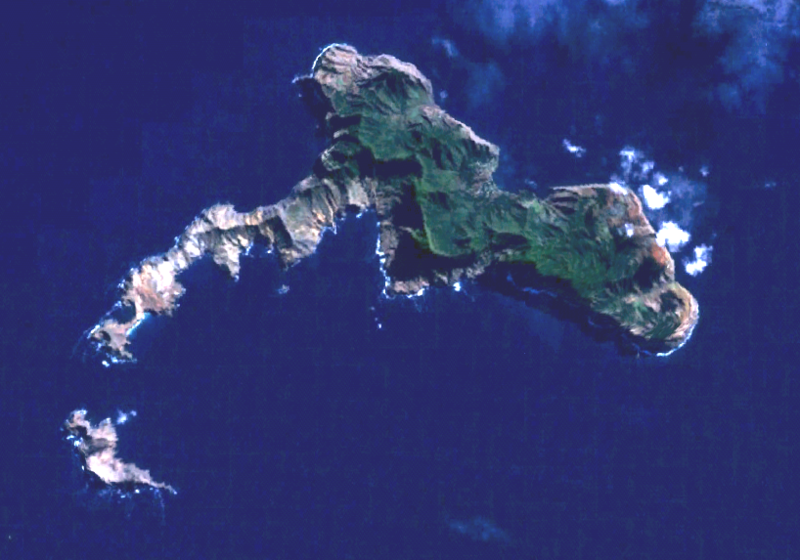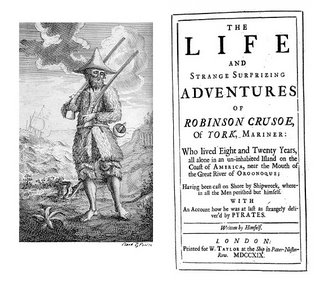An article in the journal Post-Medieval Archaeology presents evidence from an archaeological dig on the island of Aguas Buenas, since renamed Robinson Crusoe Island, which reveals evidence of the campsite of an early European occupant. The most compelling evidence is the discovery of a pair of navigational dividers which could only have belonged to a ship’s master or navigator, as evidence suggests Selkirk must have been. Indeed Selkirk’s rescuer, Captain Woodes Rogers’ account of what he saw on arrival at Aguas Buenas in 1709 lists ‘some practical pieces’ and mathematical instruments amongst the few possessions that Selkirk had taken with him from the ship.

Aguas Buenas - Robinson Crusoe island.
The finds also provide an insight into exactly how Selkirk might have lived on the island. Postholes suggest he built two shelters near to a freshwater stream, and had access to a viewpoint over the harbour from where he would be able to watch for approaching ships and ascertain whether they were friend or foe.
Accounts written shortly after his rescue describe him shooting goats with a gun rescued from the ship, and eventually learning to outrun them, eating their meat and using their skins as clothing. He also passed time reading the Bible and singing psalms, and seems to have enjoyed a more peaceful and devout existence than at any other time in his life.
David H Caldwell, National Museums Scotland, is pleased with the results of the dig: “The evidence uncovered at Aguas Buenas corroborates the stories of Alexander Selkirk’s stay on the island and provides a fascinating insight into his existence there. We hope that Aguas Buenas, with careful management, may be a site enjoyed by the increasing number of tourists searching for the inspiration behind Defoe’s masterpiece.”

Alexander Selkirk was born in the small seaside town of Lower Largo, Fife, Scotland in 1676. A younger son of a shoemaker, he was drawn to a life at sea from an early age. In 1704, during a privateering voyage on the Cinque Ports, Selkirk fell out with the commander over the boat’s seaworthiness and he decided to remain behind on Robinson Crusoe Island where they had landed to overhaul the worm-infested vessel. He cannot have known that it would be five years before he was picked up by an English ship visiting the island.
Published in 1719, Robinson Crusoe is one of the oldest and most famous adventure stories in English literature. Whilst it is unclear whether Defoe and Selkirk actually met, Defoe would certainly have heard the stories of Selkirk’s adventure and used the tales as the basis for his novel.
Article: Excavation at Aguas Buenas, Robinson Crusoe Island, Chile, of a gunpowder magazine and the supposed campsite of Alexander Selkirk, together with an account of early navigational dividers. Daisuke Takahashi, David H Caldwell, Iván Cáceres, Mauricio Calderón, A D Morrison-Low, Miguel A Saavedra, and Jim Tate. Post-Medieval Archaeology, Volume 41 number 2, pp. 270-304(35).






Comments